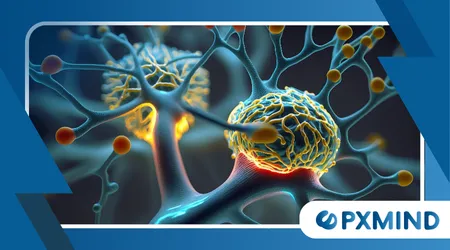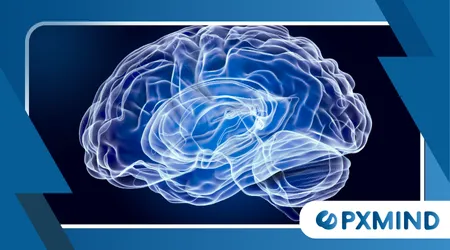Neuroplasticity: How Your Brain Rewires Itself

Neuroplasticity is not just a scientific term; it’s the silent force behind every habit you break, skill you master, and fear you overcome.
Anúncios
The idea that the brain can rewire itself has transformed our understanding of learning, healing, and human potential.
Gone are the days when cognitive limits were considered fixed — today, science confirms that your brain remains adaptable, regardless of age.
From recovery after trauma to building new skills in adulthood, this dynamic capacity shapes how we grow, adapt, and navigate complexity.
But how exactly does this rewiring happen, and what does it mean for your daily life, your career, or even your emotional health?
Let’s explore what modern neuroscience reveals about the most powerful tool you already carry: the ability to change your mind — literally.
Summary
- The brain is capable of profound change throughout life.
- Learning, trauma, and even environment reshape neural pathways.
- Modern neuroscience proves the plasticity of the adult brain.
- Rewiring can support healing, growth, and performance.
- Practical habits can boost cognitive flexibility.
- Emotional and psychological resilience are deeply tied to brain adaptability.
- One analogy, two real-life examples, and one current statistic are included.
A Mind That Bends, But Doesn’t Break
You’ve likely been told that habits are hardwired, personalities fixed, and intelligence static. But what if that belief has held you back more than any obstacle?
The truth is far more empowering: your brain is designed to change. And not only in childhood. Across adulthood and even into old age, neural connections remain active, fluid, and adaptable.
That ability, known as neuroplasticity, is quietly rewriting the way we approach recovery, education, leadership, and even aging.
Also Read: Mindhacks to Improve Your Memory for Good
What Is Neuroplasticity, Really?
Let’s strip away the jargon: neuroplasticity is your brain’s ability to reorganize itself by forming new neural connections. This happens when we learn something new, experience novelty, or recover from injury.
The idea dates back to the 19th century, but it wasn’t until the 1960s that neuroscientist Paul Bach-y-Rita made headlines by helping a blind man “see” through touch using a machine. The brain, it turned out, could remap its sensory input.
Since then, neuroscience has shattered the old dogma that brain development stops in early adulthood.
In fact, a 2023 meta-analysis published in Nature Reviews Neuroscience confirmed that adult brains exhibit high degrees of plasticity, especially in response to learning, mindfulness, and trauma therapy.
+ How the Brain Learns: A Simple Guide
From Damage to Growth: The Recovery Revolution

One of the most compelling illustrations of neuroplasticity in action is stroke rehabilitation. Until recently, a stroke-induced brain lesion was considered permanent.
Now, thanks to this neural flexibility, patients can regain mobility, speech, and function by activating alternate pathways.
A powerful case: a Brazilian woman in her 50s, once unable to walk after a traumatic brain injury, learned to balance and move again through a tailored routine of mirror therapy, virtual reality, and focused neurofeedback.
Her progress wasn’t miraculous — it was neurological.
+ Brain Myths Debunked: What Science Really Says
The Science of Rewiring Habits
Ever wonder why breaking a bad habit feels like swimming upstream? It’s because the brain prefers efficiency, and well-used pathways become the fastest routes — like well-worn highways. But, like highways, they can be rerouted.
Here’s the good news: with consistent effort, new “roads” emerge. In 2024, researchers at Harvard Medical School found that habit reversal training (HRT) significantly changes activity in the dorsolateral prefrontal cortex, a brain area linked to self-control.
In other words, your choices literally reshape your brain’s design.
Still, rewiring takes intention. New patterns need reinforcement through repetition, emotional engagement, and reflection.
That’s why passive learning rarely sticks — your brain needs to feel the change to make the change.
Neuroplasticity and Emotional Resilience
Beyond motor skills or habits, emotional healing also thrives on neural flexibility. Trauma doesn’t just hurt feelings; it creates embedded responses in the amygdala and hippocampus.
But through therapies like EMDR (Eye Movement Desensitization and Reprocessing) or CBT (Cognitive Behavioral Therapy), those neural codes can be revised.
A compelling analogy? Think of your brain like a forest trail. Every time you revisit a thought or emotion, you wear the grass down further.
But with effort, you can forge a new path — and with time, the old trail disappears beneath fresh growth.
This matters for anyone facing anxiety, depression, or burnout. The more you practice mental reframing, the more your neurons fire in new, healthier directions.
The Role of Environment in Brain Adaptation
Did you know your surroundings influence how your brain changes?
A 2023 study from University College London showed that people in nature-rich environments displayed greater prefrontal cortex activity, associated with creative thinking and executive function.
City dwellers, on the other hand, showed higher cortisol and less neural diversity.
Translation: where you are — and who you’re around — subtly shifts your brain’s growth. That’s why changing your environment can feel like hitting “reset” on your mind.
The Bilingual Brain
Learning a second language later in life used to be considered pointless. Not anymore.
Neuroimaging now shows that bilingual adults have more gray matter density in the left inferior parietal region, which enhances decision-making and memory.
One example: a retired engineer from Canada learned Spanish at 62. Within 18 months, MRI scans showed increased connectivity in language and memory circuits — and improved emotional resilience in the face of early-stage dementia.
The Musician’s Memory
A young adult who learned to play piano after struggling with ADHD reported not only better focus, but improved emotional regulation.
After a year of consistent practice, fMRI results showed enhanced activity in the anterior cingulate cortex — a region key to attention and impulse control.
Neural change doesn’t need to be dramatic to be meaningful. It just needs to be intentional.
Table: Everyday Activities That Enhance Neuroplasticity
| Activity | Brain Region Impacted | Neuroplastic Effect |
|---|---|---|
| Learning a new skill | Hippocampus, prefrontal cortex | Strengthens memory, decision-making |
| Physical exercise | Whole brain (esp. hippocampus) | Promotes neurogenesis and synaptic plasticity |
| Mindfulness meditation | Anterior cingulate cortex, amygdala | Improves focus, reduces stress response |
| Social interaction | Prefrontal cortex, mirror neurons | Boosts empathy, cognitive flexibility |
| Sleep (7–9 hours) | Brain-wide recovery processes | Consolidates memory, restores neural pathways |
Source: Harvard Health Publishing – How to Keep Your Brain Healthy
A Tool for the Modern Workforce
In 2025’s knowledge economy, adaptability isn’t optional — it’s essential. Neuroplasticity is the biological basis for lifelong learning and skill acquisition, making it a key competitive advantage.
From software engineers upskilling with AI to marketing professionals adopting neurolinguistic strategies, the brain’s ability to “upgrade” remains the backbone of future-proof careers.
This is where companies can make a difference, too. Corporate wellness programs that emphasize learning, mentorship, mindfulness, and resilience training are not perks — they’re investments in the workforce’s cognitive capital.
A Word of Caution: Plasticity Cuts Both Ways
Let’s not romanticize it. Just as the brain adapts to growth, it can adapt to dysfunction. Doomscrolling, chronic stress, and substance use also form pathways — and those aren’t easy to undo.
That’s why conscious neuroplasticity matters. You can’t control every input, but you can choose what you return to, what you practice, and what you prioritize. The brain is plastic, yes — but it doesn’t choose the mold. You do.
The Bottom Line: What Will You Rewire Next?
When you understand that change is not only possible but biological, your sense of control deepens. You’re not stuck.
You’re sculpting — moment by moment, choice by choice, with every focused action or quiet pause.
Isn’t it time we stopped asking if we can change, and started asking how we want to?
For more science-backed strategies on enhancing mental flexibility, check out The Dana Foundation’s insights on brain development.
Frequently Asked Questions
Q1: Is neuroplasticity the same for everyone?
Not exactly. Factors like age, health, and lifestyle affect the degree and speed of neural change — but everyone retains some capacity for rewiring.
Q2: Can neuroplasticity reverse trauma?
While it can’t erase trauma, it enables healing by allowing new emotional responses and interpretations to replace automatic ones, especially with guided therapy.
Q3: How long does it take to rewire the brain?
Consistency is key. Minor changes can take a few weeks; deeper rewiring, such as changing ingrained habits or emotional responses, may take months or longer.
Q4: Is there a risk in too much neuroplasticity?
Over-flexibility in some brain regions can be linked to disorders like OCD or anxiety. Balance is essential, just like with physical flexibility.
